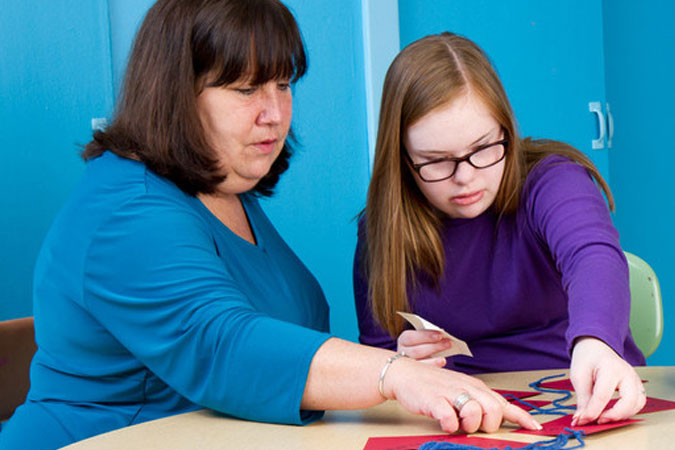
Today, more than ever, we are keenly aware of the term climate because of the issue of climate change. Climate refers to the prevailing weather conditions in a region over a long period of time. In a climate-controlled environment, we can control those conditions (heat, humidity, barometric pressure, etc.) to suit our purposes, such as growing plants and flowers in a greenhouse.
A faith formation environment must be “climate-controlled,” not so much in terms of temperature—although we definitely want people to be comfortable!—but in terms of conditions that are conducive to encountering the mysterious presence of Jesus Christ. So, what does it mean to create a “climate of encounter?” It means, first and foremost, that we don’t just read and talk about Jesus, but that we engage in experiences that lead us to truly encounter him. To learn how to do this, we look to Scripture to see how people respond when they encounter the Divine.
- Space—In the Old Testament, we read of how ordinary people would mark a space where they encountered God by building an altar. Altars were built by Noah (Genesis 8:20), Abraham (12:7; 13:4; 22:9), Isaac (26:25), Jacob (33:20; 35:1–3), and Moses (Exodus 17:15). As catechists, we sacralize or make sacred a space by enhancing it with symbols of our faith (i.e. creating a prayer table) that create a climate of encounter.
- Music and Singing—Often in Scripture, people mark their encounters with God by breaking into song. Perhaps the most famous of these examples is when Moses, his sister Miriam, and the People of Israel broke into song after God led them safely through the waters of the Red Sea (Exodus 15). Music and singing touch and lift our hearts. Throughout the Mass, we worship God by singing. In our catechesis, we create a climate of encounter by incorporating music and singing in order to touch and lift hearts.
- Silence—Scripture tells us that the Prophet Elijah listened for God’s voice and did not hear it in a mighty earthquake or a roaring fire but rather, in a tiny whispering sound. Upon hearing this “silent sound,” Elijah hid his face and stood silently before God (1 Kings 19:13). Our Tradition teaches us that silence is God’s primary language. Silence raises the profundity of any experience and is a proper way of honoring the profundity of God’s presence. In the liturgy, we have moments of silence that enable us to reflect more deeply on the sacred mysteries we celebrate. In our catechesis, we do well to incorporate moments and periods of silence so that our participants can encounter God speaking in his primary language.
- Storytelling—Like a lecture, stories contain words. Unlike a lecture, however, stories have the capacity to transport us into another reality. Stories were one of the most powerful mechanisms that Jesus relied on to proclaim the Kingdom of God. As catechists, we tell the stories of Scripture, the stories of the saints, and the stories of our own encounters with God in order to lead others to encounter him.
- Movement and Gesture—In Scripture, when people encounter the Divine, they bow, dance, hide their faces, fall to their knees, raise their hands, beat their breasts, and so on. Perhaps the most famous example is of King David breaking into a dance upon recovering the Ark of the Covenant and bringing it to Jerusalem (2 Samuel 6:14). We encounter God with our bodies. In the liturgy, we walk in procession, stand, sit, kneel, bless ourselves, bow, and genuflect. In our faith formation, we do well to establish a climate of encounter by inviting our participants to engage in these same movements and gestures that invoke the Divine.
- Sign and Symbol—In Scripture, God’s presence is manifested in physical signs such as the burning bush that Moses saw. In the liturgy and sacraments, we use signs and symbols such as water, bread, wine, oil, candles, crucifixes, statues, and icons to represent the sacred. In our faith formation, we too rely on these signs and symbols of our faith to acknowledge the Divine Presence in our midst and to establish a climate of encounter.
- Ritual—A routine is something we do the same way, all the time, with little or no thought. We have daily routines that we go through to wake up and get ready for work or school, and we can do these routines with our eyes closed. A ritual, however, is something that we do the same way, all the time, with deep and profound thought. In Scripture, we learn of the institution of the Passover ritual to make present God’s saving action in the Exodus event (12). It was this ritual that Jesus used to institute the Eucharist, which we continue to celebrate as our central act of worship. In our faith formation settings, we can build a climate of encounter by incorporating ritual actions that flow from and lead us to the liturgy and sacraments.
- Works of Mercy—Scripture tells us that faith without works is dead (James 2:14–26). We can lecture from sunrise to sunset about faith, but unless we mobilize our participants and apprentice them in works of mercy, that faith will be empty. Works of mercy are visible, tangible expressions of God’s mercy. As catechists, we not only indoctrinate, we instigate, which means that we call and send people into action, serving the needs of others and practicing selfless love through works of mercy. By encountering others through works of mercy, they encounter Christ.
Think and pray about how you can integrate the above into your faith formation setting in order to create a climate of encounter.



Well said, Joe. Well said, indeed!
Thanks, Christina!